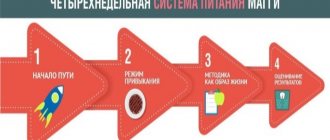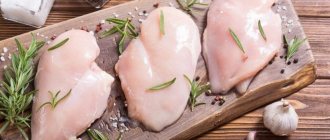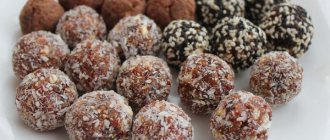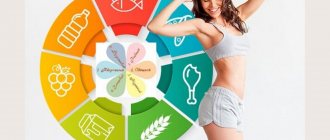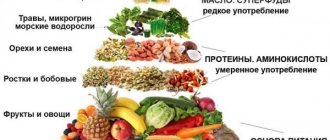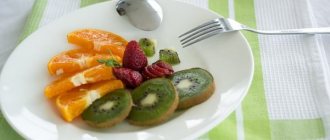Not only beginners, but also professionals may not immediately choose the right nutrition for a bodybuilder to achieve great shape. Below, the proposed fundamental principles of menu design in bodybuilding will take you to the level of a professional.
If you want to build muscle, lose fat, or get in shape, you will need a specific nutrition strategy, which will depend on your chosen goal. We have outlined approximate plans and a bodybuilder’s diet that corresponds to each of the three tasks. We will also indicate the calorie, carbohydrate, protein and fat intake standards that you should strive for daily.
Stock up on the items on our list to enjoy delicious, nutritious, home-cooked meals year-round. We will additionally offer examples of recipes with options for replacing products to diversify your pumping menu for the entire preparation period. So, here is a convenient universal guide to the types of food and how to prepare it, so that nutrition during training in the gym does not raise questions.
The composition of the menu is determined by the goals and schedule of strength training; we advise you to first learn how to calculate the kbju for the correct selection of products. The meals in our plan fall into two categories: those that include and those that do not include starchy carbohydrates.
Grocery list
Pre- and post-workout meals should be high in starchy carbohydrates but low in fat. It will make you stronger and provide you with the energy to support muscle growth. Proper nutrition for jocks who are training to gain mass should include more of these dishes in their daily diet. In between workouts, you should limit the amount of starchy carbohydrates and focus on fats. This way you will speed up the fat burning process.
Products sources of starchy carbohydrates for creating a bodybuilder’s menu:
- Starchy foods: brown rice, quinoa, potatoes, oatmeal, whole grain pasta, baked goods, cereals, cereals
- Protein products: protein powder, egg white, whole eggs (dosed), lean meat, white fish, Greek yogurt
- Fruits, vegetables and legumes: exotic fruits, green or fibrous vegetables, legumes
- Vegetable oil: use sparingly, a teaspoon instead of a tablespoon
Starch-free food is prepared from:
- Protein foods: protein powder, eggs, white and red meat, fatty or white fish, Greek yogurt. Here you will find the best high quality protein rich foods.
- Fruits, vegetables and legumes: berries, green or fibrous vegetables, beans (in small quantities)
- Vegetable oil or fat: measure with a tablespoon instead of a teaspoon. Avocado, seeds and nuts, coconut oil, canola mayonnaise, full-fat cheese.
Note: A “post-workout snack” refers to a shake or meal rich in quickly digested carbohydrates.
Proper nutrition in bodybuilding
Proper nutrition for bodybuilders is half the success.
There is not a simple, but a scientific approach to this issue, which allows the athlete to build muscle mass without problems for the athlete’s health. Otherwise, disturbances in the functioning of the gastrointestinal tract, central nervous system and cardiovascular system are possible. To build voluminous, strong and sculpted muscles, it is not enough to master various training methods around the world or some personal techniques. Without proper nutrition in appropriate amounts, it is impossible to achieve high results. Nutrients are essential for continued muscle growth after training and full recovery. In other words, in order to increase muscle volume, you need to eat, and eat a lot, but correctly, otherwise it will not be the muscles that will build up, but the fat layer.
This nutrition program is highly effective, progressive and affordable. The thing is that it is based on the most modern advances in the field of nutrition, so it serves as an ideal addition to any training processes that are based on a scientific approach. This approach to nutrition will allow you to quickly increase muscle mass, without gaining excessive amounts of fat.
Some athletes who are “on the mass” suffer from the negative effects of fat in the body and insulin sensitivity, and this slows down the process of muscle growth. Such a diet is free of such drawbacks. Thanks to such a program, it is possible to gradually increase the number of calories consumed by athletes, so that the body has time to adapt to it. In other words, problems such as catabolism and excess fat deposits are left behind.
“Without proper nutrition and in the proper amounts, it is impossible to achieve significant results from training.”
Diet for a beginner
Norm: 2500 Kcal, 218 g carbohydrates, 218 g protein, 83 g fat
If you want to improve your shape and become more energetic in training, this option will be the most optimal. It limits carbohydrate intake from food and sets a high level of protein intake. It focuses on foods with antioxidant properties that can improve the condition of blood vessels and prevent inflammatory processes - these two factors activate the aging process of cells.
Meal schedule
- Dish 1: Starchy-carbohydrate
- Meal 2: Low/No Carb
- Meal 3: Low/No Carb
- Meal 4: (Post-workout snack) Starchy-carbohydrate
- Dish 5: Starchy-carbohydrate
Recommended Recipes
Dish 1
- Greek yogurt - one and a half cups (tbsp.)
- Raspberries - 1/2 tbsp.
- Muesli (vanilla, almond, or without fillers) – 1/3 tbsp.
- Eggs (source of Omega-3) – 3
Dish 2: Double chocolate smoothie with cherries
- Protein powder (chocolate flavor) – 2 servings
- Coconut milk - 1/4 tbsp.
- Cherries – 3/4 tbsp.
- Flax seeds – 1 tablespoon (tbsp.)
- Cocoa powder – 1 tbsp. l.
- Ice – 3-4 pieces
- Water – 2-3 tbsp.
Dish 3: Burger with lettuce
- Lettuce – 2 sheets
- Ground beef (5% fat) – 227 g
- Tomatoes – 2 rings
- Red onion – 2 slices
- Ketchup – 1 tbsp. l.
- Mayonnaise (canola) – 1 tbsp. l.
- Green beans – 3 tbsp.
Meal 4: Post-Workout Snack
- Protein bars (recovery drink) – 1 serving
Dish 5: Shrimp with spinach salad and side dish of brown rice
- Shrimp – 170 g
- Brown rice - 1/4 tbsp.
- Spinach – 4 tbsp.
- Feta cheese – 1/4 tbsp.
- Half paprika
- Olive oil (Extra virgin) – 2 tbsp. l.
- Raspberry substitutes: 5 chopped strawberries, 1/2 tbsp. blueberries, 2/3 tbsp. blackberries or 1 tbsp. l. raisins
- Instead of muesli: 1/3 tbsp. oatmeal or rolled oatmeal flakes, 3/4 tbsp. breakfast cereal Fiber One or 2/3 tbsp. organic flakes
- Coconut milk alternative: 2 tbsp. l. chopped walnuts
- Cherries are replaced: 1 tbsp. blackberries
Are there differences between women and men?
A bodybuilder's diet must be individualized, as there are large differences in diet between women and men. Experts point out the following nuances:
- if a woman needs to reduce body weight, then no more than 29 Kcal/kg should enter the body per day, and for men this figure is slightly higher - up to 32 Kcal/kg;
- a man’s muscle mass will actively increase if he trains 5 times a week and consumes 42 Kcal/kg per day;
- women will be able to make their body sculpted if they train at least 3 times a week and allow a maximum of 38 Kcal/kg per day to enter the body;
- Representatives of the fair half of humanity need to increase their aerobic exercise to get sculpted muscles.
Women and men should consume different amounts of complex carbohydrates:
- to burn fat, a man needs 3 g per kg of real weight, a woman – only 2 g;
- To build muscle mass and form a beautiful figure, ladies will need 3 g of complex carbohydrates per 1 kg of body weight, men – 4 g.
Expert opinion
Yulia Mikhailova
Nutrition expert
In order not to get confused in the calculations and not to harm your own health, a bodybuilder’s diet should be compiled by a tandem of specialists - a nutritionist and a fitness trainer. If a person does not strive to exercise and only pursues the goal of losing weight, then it is impossible to adhere to such a diet - weight gain may occur rather than loss.
Nutrition for bodybuilders to gain muscle mass
This mass-building diet is perfect for lean men who want to build muscle while training in the gym.
Norm: approximately 3000 Kcal, 300 g carbohydrates, 225 g protein, 100 g fat
Forming new muscle fibers requires a high-calorie, high-carbohydrate diet. Please note that a mass-gaining nutrition program does not imply endlessly eating everything that catches your eye. Quite the contrary, you should consume high-quality, nutritious, carbohydrate-rich food in doses during the hours of greatest need for it - before and after completion of the training.
Please note that this meal plan is suitable for those who go to the gym in the afternoon. If you train in the morning, it's enough to switch up your meals so that you eat starchy foods during your pre- and post-workout snacks. Next, stay away from starchy carbohydrates throughout the day.
Meal schedule
- Dish 1: Starchy-carbohydrate
- Meal 2: Low/No Carb
- Meal 3: Low/No Carb
- Meal 4: (Post-workout snack) Starchy-carbohydrate
- Dish 5: Starchy-carbohydrate
- Dish 6: Starchy-carbohydrate
Recommended Recipes
Dish 1: Scrambled eggs with cheese and shallots
- Eggs (source of Omega-3) – 3
- Egg whites – 4
- Cheese (cheddar) – 1/4 tbsp.
- Shallots – 2
- Ezekiel bread – 2 pieces
- Apples – 1
Dish 2: Blueberry and almond smoothie
- Protein powder (vanilla flavor) – 2 servings
- Blueberries – 1 tbsp.
- Almonds – 28 g
- Almond milk – 1 tbsp.
- Water – 1 tbsp.
- Ice – 3-4 pieces
Dish 3: Steak with tomato and bean salad
- Steak (grilled flank steak) – 170 g
- Tomatoes – 1
- Half a cucumber (sliced)
- Chickpeas – 1 tbsp.
- Olive oil – 1 tbsp. l.
Meal 4: Post-Workout Snack
- Protein powder (recovery drink containing 50g carbohydrates and 25g protein) – 1 serving
Dish 5: Chicken with quinoa salad
- Chicken meat – 170 g
- Quinoa – 1/3 tbsp.
- Walnuts – 2 tbsp. l.
- Raisins – 2 tbsp. l.
Dish 6: White fish with yams and parmesan
- Tilapia – 170 g
- Parmesan cheese – 2 tbsp. l.
- Yams – 2 (medium size)
- Butter – 1 tbsp. l.
- Broccoli – 1 tbsp.
- Egg white substitutes: 2 slices turkey bacon, 2 small chicken sausages, 2 slices Canadian bacon or 1/4 cup. canned salmon
- Shallots can be replaced: 2 tbsp. l. salsa, 1/4 tbsp. chopped onion, or 2 tbsp. l. chopped sun-dried tomatoes.
- Blueberry alternative: 3/4 cup. frozen mango
- Instead of chicken fillet: 170 g pork tenderloin, 141 g buffalo ribeye, 141 g beef upper thigh
- Quinoa analogue: 1/3 tbsp. couscous, 1/4 tbsp. brown or black rice
- Substitution for tilapia: 141 g tuna steak, 198 g cod, 170 g shrimp
- Yams are replaced: 1/3 tbsp. agaric, wheat or pearl barley
Basic principles of athlete nutrition
Exercises in the gym will be effective only in combination with proper nutrition. There are different diets that are more effective in certain cases. For a novice bodybuilder, they are their own, since the main goal is to build lean muscle mass, and not lose weight. From the very beginning of your sports journey, you should adhere to the basic principles of nutrition.
During the first month and a half of training, the athlete should completely abandon a number of prohibited foods, these include:
- carbonated drinks;
- semi-finished products;
- white flour products;
- smoked meats;
- confectionery;
- fatty food;
- sausages;
- jams and preserves;
- pickles.
Most of the foods on this list are simple carbohydrates, and they are the worst enemies of an athlete, or any person in general. They are quickly processed in the body, turning into fat deposits. The second part of the described products retains water in the body due to the excessive content of salt and chemical additives.
Maximum mood for protein foods. Protein or protein should be the basis of your diet, it is what helps build muscle mass. Protein products that should be constantly present in the diet:
Carbohydrates, which should make up 30% of your menu, should also be correct, namely complex, these include:
- cereals, best of all buckwheat and oatmeal, rice and semolina porridge should be excluded;
- pasta from durum wheat;
- greenery;
- zucchini;
- tomatoes;
- cucumbers;
- wholemeal bread with bran;
- apples.
Of the fats, it is better to give preference to vegetable oils, for example, olive, flaxseed or sunflower oil. Nuts and some types of fish can also be their sources.
Train yourself to eat smaller meals, preferably more often, but in smaller portions. An athlete should eat at least 5–6 meals per day. The idea that you can’t eat after six is a mistaken opinion; such a restriction will only hinder the gain of muscle mass. An hour before going to bed, you need to drink a protein shake or eat a pack of cottage cheese.
Carbohydrate foods should be concentrated in the first half of the day, the second half should be saturated with proteins.
Drink a lot of water; it will not be retained in the body if you do not abuse salt.
All dishes can be prepared:
- Grilled;
- in the oven;
- steam or cook.
Give up the habit of eating fried food; the dish will not be inferior in taste if it is grilled or baked in the oven, but the fat content in it will be significantly reduced.
Useful video
For information on the principles of losing weight while gaining muscle mass, watch this video:
Similar articles
- Losing weight by drying the body: what menu is suitable, choose...
Quite complex weight loss by drying the body is not suitable for everyone. For example, in girls it can provoke changes in the menstrual cycle. The menu is quite monotonous, the food is mainly protein products and vegetables. Read more - Diet for losing weight legs, thighs, buttocks, abdomen, calves...
It is not easy to create a diet for losing weight in your legs (especially specific parts - thighs, calves, buttocks) and abdomen. The thing is that the menu will not bring quick weight loss. Exercise and lifestyle changes are needed. Read more
- Protein shakes for weight loss: recipes for...
Initially, protein shakes were used only by athletes for weight loss. However, nutritionists noticed fat-burning properties in them and offered recipes for preparing them at home after workouts. Read more
Stick to your meal plan[edit | edit code]
For this entire system to work effectively, you must strictly follow your strength nutrition diet. Add your favorite foods to your diet. Use the sample menus presented in Chapters 12–15 to create your own personalized meal plan. If you don't like the foods suggested, you won't be able to follow this plan. If you take liquid supplements, try different brands and flavors to find the right products for you.
Listen to your body and adjust your diet to the time when you usually feel hungry. You may prefer to vary your meal times rather than sticking to a set schedule. But also remember your actual food and drink needs; Sometimes we confuse the feeling of thirst with the feeling of hunger. Wherever you go, try to always keep some kind of drink and something to eat on hand. Most successful strength athletes carry a backpack full of food and drinks with them everywhere they go. This way, they will always be able to stick to their eating schedule. And if they get hungry, they won't be dependent on vending machines or other quick food sources that are high in fat and sodium.
When you are trying to lose fat, you may have difficulty visiting restaurants and especially traveling. If you do find yourself in this situation, try to find a restaurant that specializes in healthy eating and can easily accommodate your custom order. But don’t forget to ask for the recipe for the dish. Menu descriptions of items may be incomplete or inaccurate. You can even order food not listed on the menu - restaurants like this should probably accommodate your requests.
Remember to always calculate the number of calories you need based on your current weight. If you gained weight during the muscle-building phase and now want to lose those extra pounds, start with your current weight.
No one will do this for you. You know that in order to become fit and strong, you have to work hard on your body. Your muscles also need nutrition to grow. Plan your diet and stick to it constantly. You will be shocked by your excellent health and appearance and also by your athletic results.

